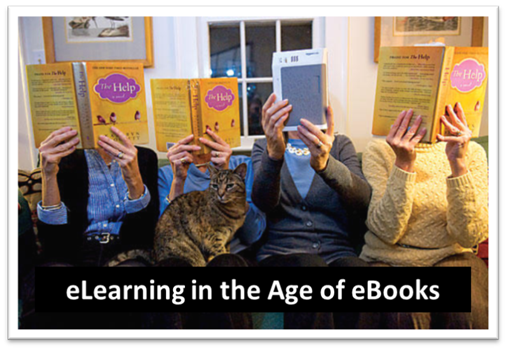Synthesis. The world is going digital. Learning has evolved into elearning and books have been transformed into eBooks. As the world becomes more wired each day, a persistent question emerges: Will paper become obsolete? What is the impact of the ‘paper versus digital divide’ compared to story-based design lessons?

Image source: www.goodreader.com
The ‘paper versus digital issue’ has not really bothered me. After more than four decades of teaching, facilitating, elearning designing and story-based lesson development, I fully appreciate both the paper-based content and digital references. In eLearning, paper-based content remains important, an element that we developers could not and should not completely do without. Furthermore, my generation grew up with typewriters and ‘real books’ and I don’t expect myself to completely let go of my non-digital mindset in exchange for a tablet.
Electronic reading materials and sources also have limitations. Fancy gadgetry creates deterrents to learning. In January 2013, Ann Mangen of the University of Stavanger in Norway conducted a comparative study between readers using eBooks and physical books. These are the results:
- Mangen and her colleagues asked 72 10th-grade students of similar reading ability to study one narrative and one expository text, each about 1,500 words in length.
- Half the students read the text on paper and the other half read them in pdf files on computers with 15-inch liquid-crystal display (LCD) monitors.
- Students completed reading-comprehension tests consisting of multiple-choice and short-answer questions, during which they had access to the text.
- Students who read the text on computers performed a little worse than students who read them on paper.
"[Even so], evidence from laboratory experiments, polls and consumer reports indicates that modern screens and e-readers fail to adequately recreate certain tactile experiences of reading on paper that many people miss and, more importantly, prevent people from navigating long texts in an intuitive and satisfying way. In turn, such navigational difficulties may subtly inhibit reading comprehension. Compared with paper, screens may also drain more of our mental resources while we are reading and make it a little harder to remember what we read when we are done. A parallel line of research focuses on people's attitudes toward different kinds of media. Whether they realize it or not, many people approach computers and tablets with a state of mind that is less conducive to learning than the one they bring to paper."During my younger days, when I felt tired of reading a book, I simply close my eyes, relax and allow the contents of the book to seep down into my consciousness. Nowadays, when kids get tired of reading their eBooks, they open other applications such as games, social media, or music to entertain them. Electronic becomes the major distraction in electronic reading.
I am not 100% confident or clear on this. I have mixed feelings about these ideas. But are they worth pondering and testing to improve reading ? What do you think? It seems counter intuitive especially after all the years of being told that hypertext learning is good for eLearning. I take that Ann Mangen and Feris Jabr, the authors whose works I am quoting in this blog, suggest that:
- eLearning design should be entertaining but it is not for entertainment. Developers, especially those who use gamification for eLearning, should strike a healthy balance between entertainment and education. The game should lead to better learning and knowledge retention. Thus, proper processing through facilitation is important after the interactive learning.
- Minimize hypertext and links. This seems to be the trend right now in digital reading. I noticed that most news websites insert links to related stories between the paragraphs of the main story. This is a cause of diversion and it removes the focus from the main content.
- Give out physical handouts and workbooks. This is what I regularly do whenever I conduct my story-based design workshops. With printed handouts and workbooks, participants can jot dow their notes and ideas while I speak and they experience the ‘affinity’ with a printed copy of the lessons.
Related Blogs
Inspire others - be a Master Storyteller -Study the Profile and Survey
Learners are in a State of Readiness - Avoid Rigid Learning Objectives
Reference
The Reading Brain in the Digital Age: The Science of Paper versus Screens by By Ferris Jabr
Mangen, Anne, Ph.D., 2011, Why bother with print? Some reflections on the role of fixity, linearity and structure for sustained reading

No comments:
Post a Comment
Welcome! Sharing your comments is very valuable learning experience for me and others. Thanks!